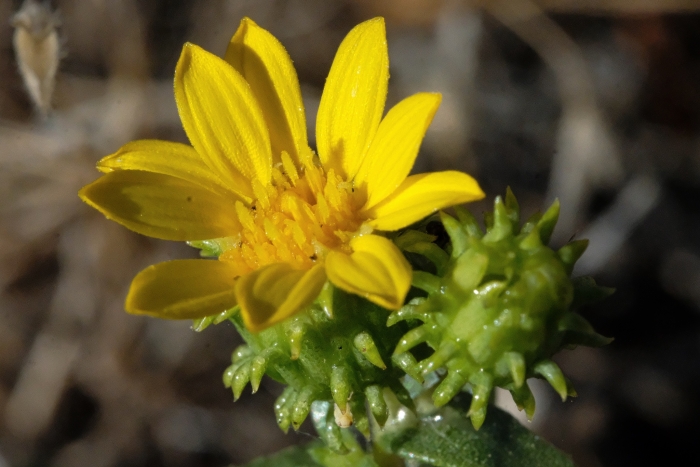Hairy Gumweed
(Grindelia hirsutula)
Hairy Gumweed (Grindelia hirsutula)
/
/

Madeleine Claire
CC BY 4.0






















































Estimated Native Range
Summary
Hairy Gumweed is valued for its drought tolerance and its ability to thrive in poor soils, making it a suitable choice for xeriscaping and naturalistic plantings. Its showy yellow flowers bloom from late spring to early fall, attracting pollinators such as bees and butterflies. In cultivation, it requires full sun exposure and does best with low to medium water requirements, preferring soils with fast drainage. While not commonly used in formal garden settings, it can be an interesting addition to native plant gardens and restoration projects. Care should be taken as it can become weedy in some conditions.CC BY-SA 4.0
Plant Description
- Plant Type: Herb
- Height: 0.3-0.4 feet
- Width: 0.225-0.3 feet
- Growth Rate: Rapid
- Flower Color: Yellow
- Flowering Season: Summer, Fall
- Leaf Retention: Evergreen
Growth Requirements
- Sun: Full Sun
- Water: Low, Medium
- Drainage: Fast
Common Uses
Bee Garden, Bird Garden, Butterfly Garden, Deer Resistant, Drought Tolerant, Erosion Control, Fire Resistant, Low Maintenance, Potted Plant, Rock Garden, Salt Tolerant
Natural Habitat
Native to coastal scrub, grasslands, and open woodlands in California
Other Names
Common Names: Oregon Gumweed, Bract Gumweed, Hairy Gumplant, Sharpleaf Gumweed, Marsh Gumweed, Grindelia, Haariges Gummikraut, Herbe À Gomme Hirsute, Klibbgrindelia
Scientific Names: , Grindelia camporum, Grindelia stricta, Grindelia hirsutula, Grindelia stricta var. platyphylla, Grindelia robusta, Grindelia nana, Grindelia squarrosa var. quasiperennis, Grindelia stricta var. angustifolia, Grindelia hallii
GBIF Accepted Name: Grindelia hirsutula Hook. & Arn.